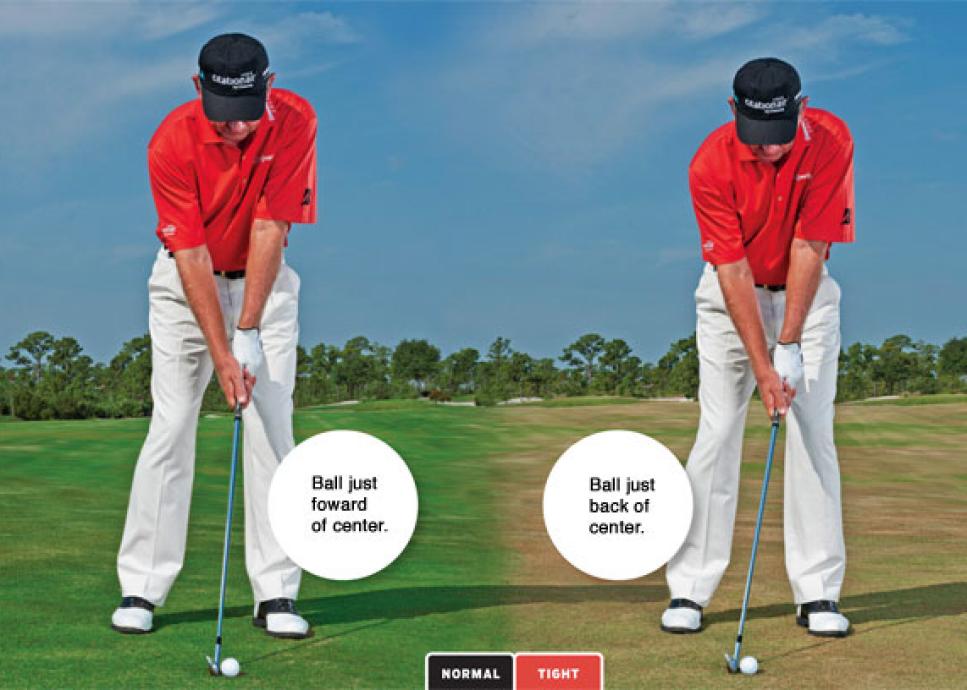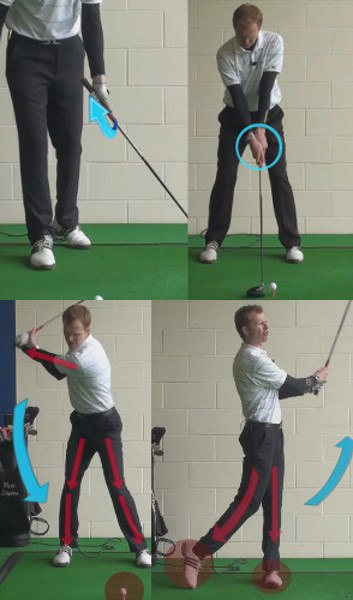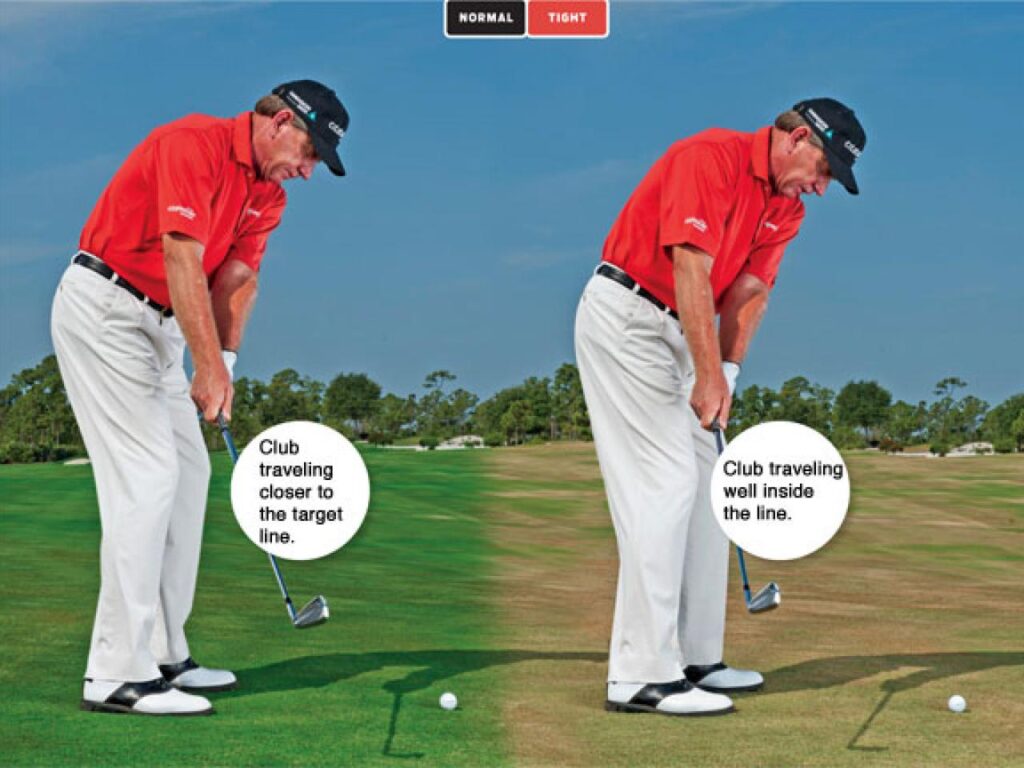When facing a narrow fairway, the key to success lies in your approach. With limited room for error, precision becomes paramount. But fear not, because navigating tight fairways doesn’t have to be a daunting task. In this article, we will explore the various strategies and techniques you can employ to effectively tackle a tight fairway. From club selection to shot placement, we’ve got you covered. So, tighten your grip on that driver and get ready to conquer any tight fairway that comes your way!

Understanding the Challenge
Analyzing the Layout of the Fairway
When faced with a tight fairway, it is crucial to first analyze the layout of the fairway. Take note of any obstacles such as trees, bunkers, or water hazards that may come into play. Understanding the layout will help you strategize and plan your shots accordingly.
Assessing the Potential Hazards
In addition to analyzing the layout, it is important to assess the potential hazards that the tight fairway presents. Are there any bunkers strategically placed along the fairway? Is there a water hazard that you need to avoid? By identifying these hazards, you can develop a game plan to navigate through the fairway efficiently and avoid unnecessary risks.
Considering the Wind Direction and Speed
One often overlooked factor when tackling a tight fairway is the wind. Consider the direction and speed of the wind, as it can greatly affect the trajectory of your shots. A headwind may require more club selection to reach your desired distance, while a tailwind may assist in gaining extra distance. By taking the wind into account, you can better strategize and adjust your shots accordingly.
Choosing the Right Club
Selecting a Driver for Maximum Distance
When tackling a tight fairway, choosing the right club is crucial. If distance is your priority, opting for a driver might be your best bet. Drivers are known for their ability to generate maximum distance, which can be advantageous when trying to navigate a tight fairway. However, keep in mind that the larger clubhead size may lead to less accuracy, so ensure you have enough space and a clear shot before committing to the driver.
Opting for a Fairway Wood for Accuracy
If accuracy is your primary concern, a fairway wood might be a better option. Fairway woods are generally easier to control and allow for more precision when hitting off the fairway. They provide a good compromise between distance and accuracy, making them a solid choice when tackling a tight fairway. Consider using a fairway wood when you need to thread the ball through a narrow opening or avoid any potential hazards.
Using a Hybrid for Versatility
For those seeking versatility, a hybrid club can be an excellent choice when tackling a tight fairway. Hybrids combine the best features of both irons and woods, providing a good balance between distance and accuracy. The design and shape of hybrids make them more forgiving and easier to hit off the ground, making them a valuable asset when navigating a tight fairway. Experiment with different hybrid clubs to find the one that suits your game best.
Perfecting the Setup
Positioning the Ball for Optimal Launch Angle
To execute your shot successfully, pay attention to the position of the ball in your setup. When tackling a tight fairway, it is crucial to position the ball for an optimal launch angle. Placing the ball slightly forward in your stance can help you achieve a higher launch angle, allowing the ball to clear any potential obstacles and land safely on the fairway. Experiment with different ball positions to find the optimal launch angle for your shots.
Aligning the Shoulders and Feet with the Target Line
Another key aspect of perfecting the setup is aligning your shoulders and feet with the target line. Proper alignment ensures that you are aiming in the right direction and sets the foundation for a straight shot. When addressing the ball, take a moment to align your shoulders and feet parallel to the target line. This will help you maintain consistency and accuracy throughout your swing, especially when tackling a tight fairway.
Maintaining a Steady Stance
A steady stance is essential when tackling a tight fairway. It provides a solid foundation for your swing and allows for better control over the clubhead. When setting up for your shot, ensure that your weight is evenly distributed, with a slight tilt towards the front foot. Keep your knees slightly flexed and maintain a stable posture throughout your swing. This will help you maintain balance and stability, enabling you to navigate the tight fairway with confidence.
Executing the Shot
Focus on Tempo and Rhythm
When executing your shot on a tight fairway, it is important to focus on tempo and rhythm. A smooth and consistent tempo promotes better timing and control over your swing. Take a moment to relax and establish a comfortable rhythm before starting your backswing. By maintaining a steady tempo, you can ensure a controlled and accurate shot, even when faced with a tight fairway.
Swing Smoothly and Controlled
In a tight fairway scenario, it is essential to swing smoothly and with control. Avoid any unnecessary power or aggression in your swing, as this can lead to inconsistency and loss of accuracy. Instead, focus on making a controlled and fluid swing, allowing the club to do the work. By prioritizing a smooth and controlled swing, you can navigate the tight fairway with finesse and accuracy.
Maintain Balance Throughout the Swing
Maintaining balance throughout your swing is crucial when tackling a tight fairway. It helps you maintain control and stability, allowing for a more accurate shot. Be mindful of your weight transfer during the swing, and avoid any excessive swaying or movement. Keep your head steady and your body balanced, ensuring that your weight is evenly distributed. By maintaining balance, you can execute your shot with precision and confidence.

Nailing the Shot Shape
Achieving a Straight Shot
When aiming for a straight shot on a tight fairway, focus on your alignment and swing path. Ensure that your shoulders, feet, and clubface are parallel to the target line. As you swing, keep the club on the desired swing path, promoting a square impact with the ball. By focusing on alignment and swing path, you can increase your chances of hitting a straight shot on a tight fairway and avoid any potential hazards.
Executing a Controlled Fade
A controlled fade can be an effective shot shape to tackle a tight fairway, especially when there is a hazard on one side. To execute a controlled fade, adjust your setup slightly by aiming more to the left (for a right-handed golfer). During your swing, focus on a slightly outside-to-in swing path, imparting a gentle left-to-right spin on the ball. This shot shape can help you navigate around potential hazards while still maintaining control and accuracy.
Performing a Draw Shot
A draw shot can also be useful when tackling a tight fairway, especially if you need to shape your shot around an obstacle. To perform a draw shot, adjust your setup slightly by aiming more to the right (for a right-handed golfer). During your swing, focus on an inside-to-out swing path, imparting a gentle right-to-left spin on the ball. This shot shape can help you shape your shot around obstacles and provide additional distance while maintaining accuracy.
Using the Bump-and-Run
Mastering Low Shots with a Short Iron
The bump-and-run is a valuable technique when tackling a tight fairway. It involves using a short iron, such as a pitching wedge or a 9-iron, to hit a low, rolling shot that gets the ball quickly onto the green without much airtime. To execute a bump-and-run, position the ball back in your stance and use a steeper angle of attack. Keep your hands ahead of the clubhead at impact to ensure a crisp and low shot. Mastering this technique can help you navigate a tight fairway with precision and control.
Controlling Distance with the Bounce of the Club
When using a bump-and-run technique, it is important to understand and utilize the bounce of the club. The bounce refers to the curved part of the clubhead that comes into contact with the turf. By using the bounce effectively, you can control the distance of your bump-and-run shots. Experiment with different clubs and practice different distances to understand how the bounce interacts with the turf and adjusts the trajectory of the shot.
Utilizing the Roll of the Ball
One of the advantages of the bump-and-run technique on a tight fairway is the ability to utilize the roll of the ball. Since the shot is low and rolling, it minimizes the chances of the ball getting caught in any potential hazards or rough areas. By allowing the ball to roll towards the target, you can ensure a safer and more accurate shot on a tight fairway. Practice controlling the roll and distance of your bump-and-run shots to optimize this technique.

Considering Risk-Reward Scenarios
Weighing the Benefits of an Aggressive Shot
When tackling a tight fairway, it is essential to carefully consider risk-reward scenarios. Sometimes, an aggressive shot may be tempting to gain more distance or avoid a potential hazard. However, it is important to assess the potential consequences of an aggressive shot. Is the reward worth the risk? Take into account the layout of the fairway, the potential hazards, and your own capabilities before deciding on an aggressive shot. Remember, sometimes it is wiser to play it safe and opt for a more conservative approach.
Assessing Potential Trouble Areas
To make an informed decision on the best approach for a tight fairway, assess potential trouble areas. Look out for any hazards, such as bunkers, water hazards, or thick rough that could impede your progress. Take note of the severity of these trouble areas and evaluate the difficulty level of navigating around them. This will help you identify areas where you need to exercise caution and adjust your strategy accordingly.
Calculating the Overall Risk
After weighing the benefits of an aggressive shot and assessing potential trouble areas, calculate the overall risk involved. Consider your comfort level with different shot types and the likelihood of successfully executing them. Sometimes, a safer, more conservative approach may be the best choice to minimize risk and ensure a solid outcome. Calculating the overall risk will help you make an informed decision and devise a strategy that maximizes your chances of success on a tight fairway.
Adapting to Different Fairway Conditions
Addressing Wet or Soft Fairways
When faced with wet or soft fairway conditions, it is important to adapt your approach. These conditions can cause the ball to dig into the turf, resulting in loss of distance and accuracy. To address wet or soft fairways, consider using clubs with more loft, as they can help elevate the ball and prevent it from digging into the ground. Additionally, focus on making a shallow, sweeping swing to minimize any excess contact with the ground. By adapting to these conditions, you can navigate a tight fairway effectively.
Navigating Firm and Fast Fairways
On the other hand, firm and fast fairways present their own challenges when tackling a tight fairway. The ball tends to roll more on these types of fairways, potentially resulting in increased distance and less control. To navigate firm and fast fairways, consider using clubs with less loft and a lower ball trajectory. This will help keep the ball flight lower and allow for better control. Additionally, pay attention to the speed and firmness of the fairway when calculating your shots to optimize your strategy.
Adjusting for Sloped or Hilly Terrain
Sloped or hilly terrain can greatly impact your shots on a tight fairway. It is important to adjust your approach to account for the elevation changes. When faced with an uphill shot, consider using a club with more loft to help get the ball in the air and increase carry distance. Conversely, when tackling a downhill shot, adjust your club selection to provide a lower ball flight and better control. Additionally, be mindful of the potential side slope and how it may affect the direction and trajectory of your shots. By adapting to sloped or hilly terrain, you can better navigate a tight fairway with precision.

Optimizing Visualization Techniques
Mental Imagery for a Successful Shot
Visualization is a powerful tool that can enhance your performance on a tight fairway. Before executing your shot, take a moment to visualize a successful outcome. Visualize the ball soaring through the air, clearing any hazards or obstacles, and landing in the desired area. Use all your senses to create a vivid mental image of the shot. By optimizing mental imagery, you can increase your confidence and focus, setting the stage for a successful shot on a tight fairway.
Visualizing the Ideal Ball Flight Path
Visualizing the ideal ball flight path is crucial when tackling a tight fairway. By visualizing the trajectory and shape of the shot, you can better align your body and clubface to achieve the desired outcome. Understand how the shot will react to the wind, potential hazards, and the layout of the fairway. Create a mental image of the ball traveling along the desired path, avoiding any trouble areas. This visualization technique will help you plan and execute your shots effectively on a tight fairway.
Building Confidence and Focus
Building confidence and focus are essential elements when navigating a tight fairway. Confidence in your abilities and trust in your preparation can greatly impact your performance. Visualize successful shots, reinforce positive thoughts, and focus on your strengths. By building confidence and focus, you can approach a tight fairway with a calm and composed mindset, increasing your chances of executing successful shots.
Course Management Strategies
Strategic Tee Placement
Course management strategies play a critical role in tackling a tight fairway. One key aspect is strategic tee placement. When given the option, assess the layout of the fairway and select a tee box that provides the best angle for your approach shot. Consider any potential hazards or obstacles and aim to position yourself for a clear and unobstructed view of the fairway. Strategic tee placement can set the stage for a successful approach on a tight fairway.
Identifying Bail-out Areas
Identifying bail-out areas is another crucial course management strategy when faced with a tight fairway. Bail-out areas are safe zones or areas with minimal risk where you can aim your shots. By locating bail-out areas, you can strategically plan your shots to avoid potential trouble areas. Analyze the layout of the fairway and identify wider areas, forgiving rough, or sections with a lower chance of hazards. This strategy will give you peace of mind and provide alternative options when navigating a tight fairway.
Considering Lay-up Shots
In some scenarios, considering lay-up shots can be a smart course management strategy on a tight fairway. A lay-up shot involves intentionally hitting the ball short of the hazard or potential trouble area to increase the chances of a safe approach to the green. This strategy minimizes risk and allows you to position yourself favorably for your subsequent shots. Assess the layout of the fairway, the distance to the hazard, and your own skill level to determine if a lay-up shot is the best option for navigating a tight fairway.
Now armed with a comprehensive understanding of how to tackle a tight fairway, you can confidently approach your next round of golf. Remember to analyze the layout, assess potential hazards, consider the wind direction and speed, choose the right club, perfect your setup, execute the shot with focus and balance, and adapt to different fairway conditions. By utilizing visualization techniques, implementing course management strategies, and adjusting your approach as needed, you can navigate tight fairways with finesse and achieve optimal results. So go out there, embrace the challenge, and enjoy the rewards of successfully navigating a tight fairway.







